The best Thunderbolt audio interfaces on the market.
Once you begin searching for the best Thunderbolt audio interfaces, you are bound to be overwhelmed by a broad array of options found on today’s market. Besides, the audio quality of affordable audio interfaces is way different than that of top-grade ones, which may be confusing.
But don’t worry as we have got you covered. In this article, we will help you pick an ideal audio interface for your budget, as well as go over the characteristics and features that matter the most when it comes to the choice of Thunderbolt audio interface.
Let’s find out which ones are the best Thunderbolt audio interfaces that truly worth your attention and offer top-notch specifications. The options on our list belong to different price categories, so everyone will find a nice audio interface for their needs.
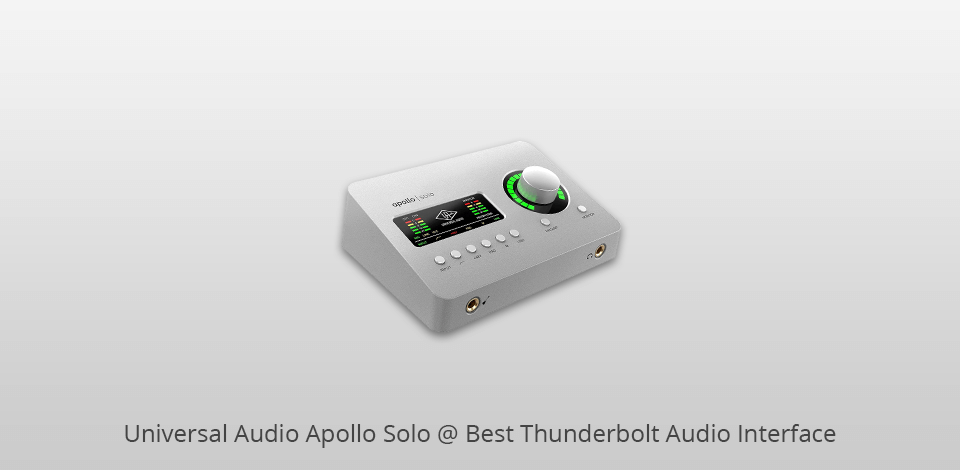
Connectivity: Wired | Audio resolution: 24-bit/192 kHz | Analogue inputs: 2 | Item Weight: 2.64 pounds
Apollo Solo is a stunning Thunderbolt 3 audio interface for Mac and Windows desktops. It boasts first-rate audio conversion, two Unison™ mic preamps, as well as a suite of onboard UAD plug-ins to record album quality tracks in real time. This small 2x4 interface begins with prominent Apollo A/D and D/A conversion and can outshine any other model in its category when it comes to sound.
Thanks to the Unison technology and integrated UAD 2 processing, it is possible to record using traditional studio tools, such as the UA 610 B Tube Preamp & EQ, LA 2A and 1176 compressors, etc. without practically any latency.
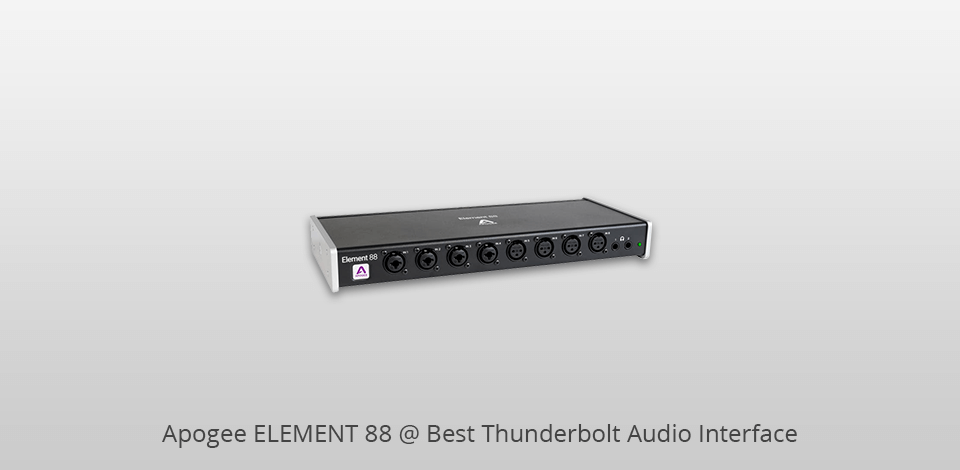
Connectivity: Wired | Audio resolution: 24-bit/192 kHz | Analogue inputs: 8 | Item Weight: 3.5 pounds
The Apogee Element 88 is one of the best Thunderbolt audio interfaces for recording music to a Mac. It adopts the greatest features of state-of-the-art Apogee equipment, which results in a polished and cost-efficient model.
This 16-in/16-out audio interface offers eight balanced front-panel analog inputs, two rear-panel XLR outputs along with two balanced 1/4" outputs, two stereo headphone outs, as well as word clock I/O. As for the Apogee’s outstanding mic preamps, eight of them are onboard ones, featuring phantom power with the ability to select it.
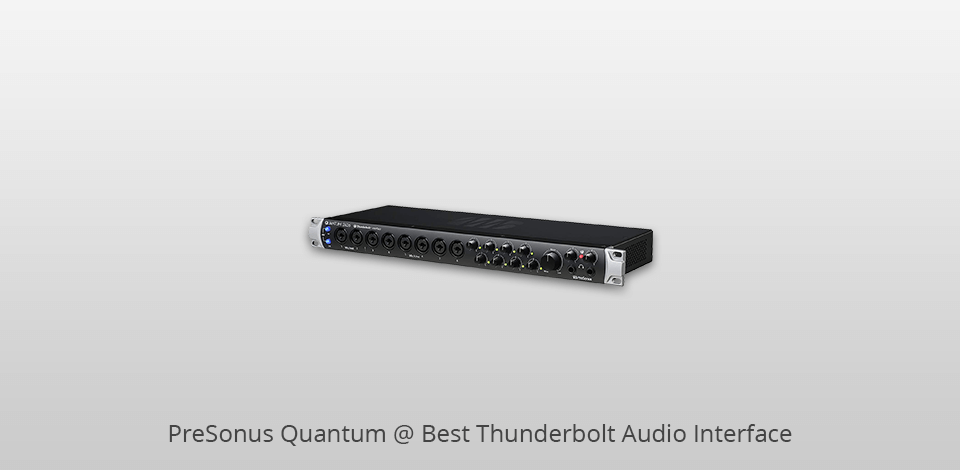
Connectivity: Wired | Audio resolution: 24-bit/192 kHz | Analogue inputs: 8 | Item Weight: 5 pounds
This Thunderbolt audio interface for PC enables you to record and monitor via the plugins within your DAW at exceptional speeds. The latter is what Quantum interfaces are notable for. The Quantum 2626 employs the remarkable speed of Thunderbolt 3 that results in an almost unmeasurable round-trip latency of less than 1 ms. Excellent sound is guaranteed due to the qualitative high-definition digital conversion and eight ultra-transparent analog XMAX mic preamps.
Using this audio interface, you can insert any preferred outboard gear with two direct preamp outputs and dedicated line-level returns. Moreover, it becomes possible to broaden the system up to 26 simultaneous inputs and outputs with the help of ADAT Optical. The Quantum 2626 is bound to simplify the music-making and recording processes.

Connectivity: Wired | Audio resolution: 24-bit/192 kHz | Analogue inputs: 2 | Item Weight: 2 pounds
Universal Audio has released a compact and inexpensive Thunderbolt audio interface Arrow. Having a rugged, all-metal housing, this model features a pair of qualitative microphone preamps with Unison simulation technology and top-grade 24-bit/192 kHz converters.
Also, this audio interface integrates a built-in DSP processor (UAD-2 Solo Core) for working with UAD plugins.
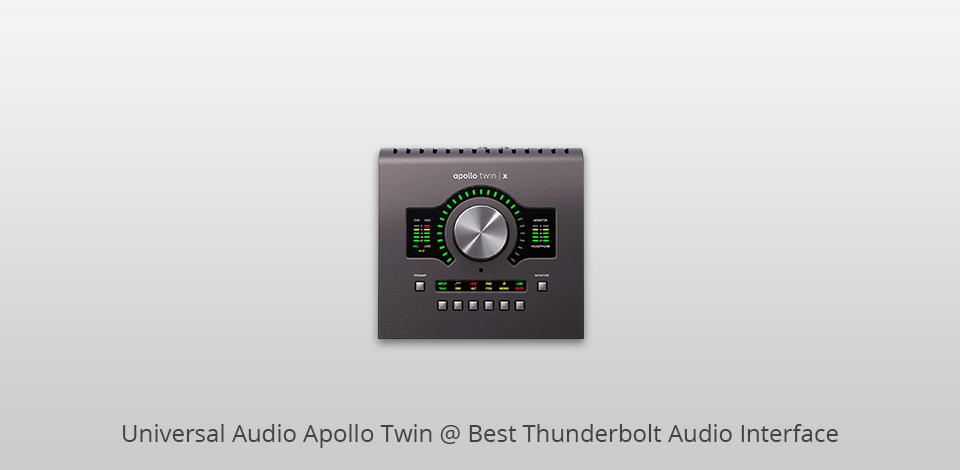
Connectivity: Wired | Audio resolution: 26-bit/120 kHz | Analogue inputs: 2 | Item Weight: 5.54 pounds
Apollo Twin MkII is a thorough redesign of the globally known professional Thunderbolt audio interface Mac and Windows. It produces improved audio conversion that resembles analog recording in many aspects.
Based on the UA’s 60-year experience in dealing with audio, Apollo Twin MkII incorporates two Unison™-enabled mic preamps and superb next-generation A/D and D/A conversion taken from UA’s flagship Apollo 8, 8p and 16. You will definitely enjoy access to the LUNA Recording System, as well as the presence of a UAD analog emulation plug-in set that can be tracked through in real time with UAD-2 DUO Core processing. With Apollo Twin MkII, the process of recording music will turn into a real pleasure.
| IMAGE | NAME | FEATURES | |
|---|---|---|---|

|
Universal Audio Apollo Solo
Our Choice
|
CHECK PRICE → | |

|
Apogee ELEMENT 88
Modern
|
CHECK PRICE → | |

|
PreSonus Quantum
High quality
|
CHECK PRICE → |
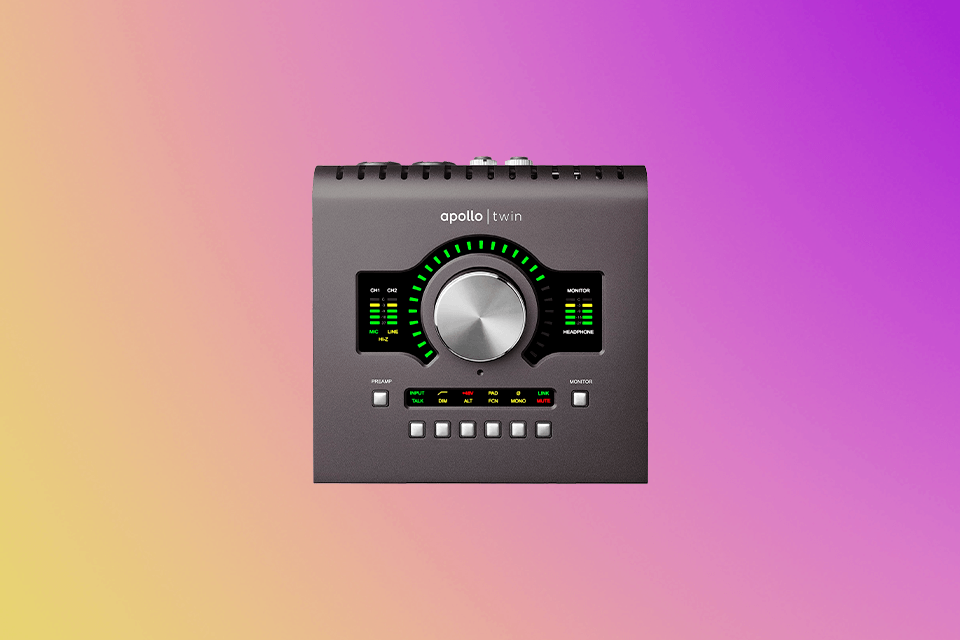
The compatibility is likely to be the least of your concerns when you start searching for the best Thunderbolt audio interfaces. These days, the majority of audio interfaces are compatible with Mac and PC computers. In rare cases, they may support either only Mac or Windows, like, for instance, Metric Halo (it is compatible with Mac only). That’s why it is better to check whether the audio interface of your choice supports your OS. Speaking of the DAW software, it mostly offers cross-platform compatibility. Among the exceptions are Apple Logic (Mac only) and Cakewalk SONAR (PC only). If the audio interface is compatible with your OS, more often than not it means that it will cooperate greatly with your DAW software.
Among the most widespread audio interface connectivity options are Thunderbolt, USB, FireWire and PCIe. In older interfaces, you will come across FireWire and PCIe.
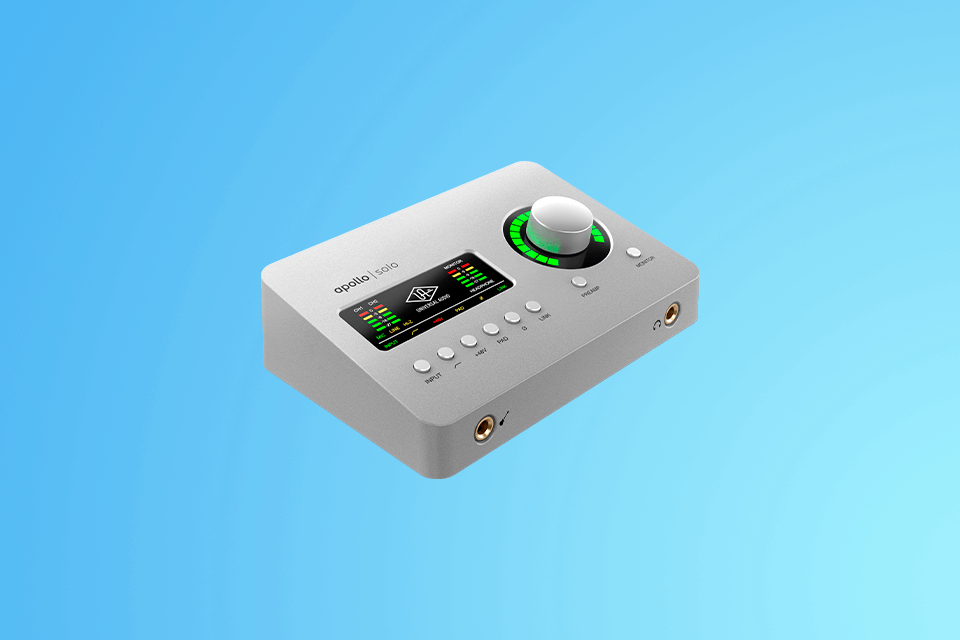
Thunderbolt connectivity belongs to one of the latest technologies. Its interfaces are sold at higher prices in comparison with USB or FireWire. Thunderbolt audio interfaces also provide more sophisticated feature-sets, which may be unnecessary for novices. In case you are a more proficient user who requires extra outputs and inputs, or you want an audio interface that will serve you for many years to come, investing in a Thunderbolt one will be the best decision.
It is an indispensable device for those who are recording to the PC software with the help of a guitar, microphones or a keyboard. In addition, an audio interface is required if you wish to enhance the sound quality while making music.
It does. The sound that goes through an audio interface is more expansive. It isn’t that noticeable if we compare bare signals. However, whenever you are running the signal to an amp and cab sim, or you are overdriving/distorting the signal using the amp sim, the sound differs a lot.
Thunderbolt 3 boasts excellent speeds, with the ability to transmit at an outstanding maximum transfer rate of 40Gbps. Thus, it is 4x faster than USB 3.1, 8x faster than USB 3.0, and twice as fast as Thunderbolt 2.
It is indeed possible to make music if you don’t have an interface. But, without it, you won’t be able to record vocals or another acoustic instrument over your electronic tracks as there is no device for plugging it all in. Also, in case you don’t do the mixing in the room, it will be difficult to guess how the mixes are translated to the rest of the systems.